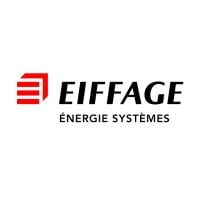
Limburg.net Company Cyber Security Posture
limburg.netLimburg.net is de afvalintercommunale van Limburg en Diest. We staan in voor de afvalpreventie en inzameling van de 44 gemeenten in de provincie Limburg en de stad Diest. Onze doelstelling is eenvoudig: wij willen ervoor zorgen dat er zo weinig mogelijk afval ontstaat. Afval dat toch niet vermeden kan worden, zamelen we in en laten we verwerken. De naam Limburg.net bundelt de drie kernwaarden van onze afvalintercommunale. 1. Wij zijn gericht op Limburg. Limburg.net dekt de volledige provincie Limburg én is actief in de stad Diest. Hiermee zijn wij niet alleen de grootste, maar ook de allereerste afvalintercommunale in Vlaanderen die een volledige provincie als werkingsgebied heeft. 2. Wij gaan voor innovatie en creativiteit. Het achtervoegsel '.net' verwijst onder andere naar nieuwe technologieën, innovatie en creativiteit. Limburg.net wil niet stil blijven staan, maar wil voortdurend op zoek gaan naar nieuwe manieren om het afvalprobleem van onze inwoners op te lossen. 3. Wij streven naar een proper milieu. 'Net' heeft nog een tweede betekenis: namelijk 'proper'. Limburg.net wil niet alleen afval ophalen, wij willen actief een steentje bijdragen aan een schoner milieu.
Limburg.net Company Details
limburg-net
46 employees
411
541
Environmental Services
limburg.net
Scan still pending
LIM_1261642
In-progress
Between 900 and 1000
This score is AI-generated and less favored by cyber insurers, who prefer the TPRM score.
 Limburg.net Global Score
Limburg.net Global Score.png)

Limburg.net Company Scoring based on AI Models
| Model Name | Date | Description | Current Score Difference | Score |
|---|---|---|---|---|
| AVERAGE-Industry | 03-12-2025 | This score represents the average cybersecurity rating of companies already scanned within the same industry. It provides a benchmark to compare an individual company's security posture against its industry peers. | N/A | Between 900 and 1000 |
Limburg.net Company Cyber Security News & History
| Entity | Type | Severity | Impact | Seen | Url ID | Details | View |
|---|---|---|---|---|---|---|---|
| Limburg.net | Cyber Attack | 60 | 2 | 12/2023 | LIM22629124 | Link | |
Rankiteo Explanation : Attack limited on finance or reputationDescription: The Limburg.net network was the target of a cyberattack by unknown individuals. The trash management company promptly terminated its own systems. Although work can only be done offline, the manned recycling parks are open. However, there may be some inconvenience. The services provided by Limburg.net are no longer available online following a cyberattack. For security considerations, Limburg.net has chosen to shut down the system so that experts can look into the matter. | |||||||
Limburg.net Company Subsidiaries

Limburg.net is de afvalintercommunale van Limburg en Diest. We staan in voor de afvalpreventie en inzameling van de 44 gemeenten in de provincie Limburg en de stad Diest. Onze doelstelling is eenvoudig: wij willen ervoor zorgen dat er zo weinig mogelijk afval ontstaat. Afval dat toch niet vermeden kan worden, zamelen we in en laten we verwerken. De naam Limburg.net bundelt de drie kernwaarden van onze afvalintercommunale. 1. Wij zijn gericht op Limburg. Limburg.net dekt de volledige provincie Limburg én is actief in de stad Diest. Hiermee zijn wij niet alleen de grootste, maar ook de allereerste afvalintercommunale in Vlaanderen die een volledige provincie als werkingsgebied heeft. 2. Wij gaan voor innovatie en creativiteit. Het achtervoegsel '.net' verwijst onder andere naar nieuwe technologieën, innovatie en creativiteit. Limburg.net wil niet stil blijven staan, maar wil voortdurend op zoek gaan naar nieuwe manieren om het afvalprobleem van onze inwoners op te lossen. 3. Wij streven naar een proper milieu. 'Net' heeft nog een tweede betekenis: namelijk 'proper'. Limburg.net wil niet alleen afval ophalen, wij willen actief een steentje bijdragen aan een schoner milieu.
Access Data Using Our API

Get company history
.png)
Limburg.net Cyber Security News
361 million account credentials leaked on Telegram: Are yours among them?
A trove of 361 million email addresses has been added to Have I Been Pwned. Check whether your account credentials have been compromised.

Limburg.net Similar Companies

FEDECAI
FEDERACION ESPAÑOL-ANDORRANA DE EMPRESAS DE CALIDAD AMBIENTAL INTERIOR. FEDECAI se constituye como la Federación de Asociacines de Calidad Ambiental de Interiores, de España y Andorra. Es una Federación independiente, sin ánimo de lucro, de participación voluntaria y que posee un carác

SAUR
As a pure player in water and essential services, Saur works to protect the environment in the heart of the territories it serves. Saur has always acted to offer the same quality of service to small towns as to large cities, guided by its mission: to restore to water the value it deserves. Saur wo

Veolia Near & Middle East
Veolia group is the global leader in optimized resource management. With nearly 200 000 employees worldwide, the Group designs and provides water, waste and energy management solutions that contribute to the sustainable development of communities and industries. Through its three complementary busin

Grupo Tragsa
Tragsa Group is a group of public companies, integrated in the State Industrial Ownership Corporation (SEPI), which has become a full service supplier and a reference company to Public Administrations. It is formed by four enterprises: Tragsa (1977) responsible for works and services' execution and

SOCOTEC
SOCOTEC has built its reputation over 70 years as an independent third party assisting companies in the areas of quality, health and safety, and the environment. Through its inspection and measurement, assistance and consultancy, and training and certification services, SOCOTEC helps to optimize t

Eiffage Énergie Systèmes
Rejoindre Eiffage, c’est rejoindre une entreprise animée d’un esprit de famille unique. Nous recherchons des talents qui valorisent l’esprit d’équipe et l’entraide. Des talents qui souhaitent découvrir, progresser, innover dans un collectif engagé pour construire un avenir à taille humaine. Nous av

Frequently Asked Questions (FAQ) on Cybersecurity Incidents
Limburg.net CyberSecurity History Information
Total Incidents: According to Rankiteo, Limburg.net has faced 1 incidents in the past.
Incident Types: The types of cybersecurity incidents that have occurred include ['Cyber Attack'].
Total Financial Loss: The total financial loss from these incidents is estimated to be {total_financial_loss}.
Cybersecurity Posture: The company's overall cybersecurity posture is described as Limburg.net is de afvalintercommunale van Limburg en Diest. We staan in voor de afvalpreventie en inzameling van de 44 gemeenten in de provincie Limburg en de stad Diest. Onze doelstelling is eenvoudig: wij willen ervoor zorgen dat er zo weinig mogelijk afval ontstaat. Afval dat toch niet vermeden kan worden, zamelen we in en laten we verwerken. De naam Limburg.net bundelt de drie kernwaarden van onze afvalintercommunale. 1. Wij zijn gericht op Limburg. Limburg.net dekt de volledige provincie Limburg én is actief in de stad Diest. Hiermee zijn wij niet alleen de grootste, maar ook de allereerste afvalintercommunale in Vlaanderen die een volledige provincie als werkingsgebied heeft. 2. Wij gaan voor innovatie en creativiteit. Het achtervoegsel '.net' verwijst onder andere naar nieuwe technologieën, innovatie en creativiteit. Limburg.net wil niet stil blijven staan, maar wil voortdurend op zoek gaan naar nieuwe manieren om het afvalprobleem van onze inwoners op te lossen. 3. Wij streven naar een proper milieu. 'Net' heeft nog een tweede betekenis: namelijk 'proper'. Limburg.net wil niet alleen afval ophalen, wij willen actief een steentje bijdragen aan een schoner milieu..
Detection and Response: The company detects and responds to cybersecurity incidents through {description_of_detection_and_response_process}.
Incident Details
Incident 1: Ransomware Attack
Title: {Incident_Title}
Description: {Brief_description_of_the_incident}
Date Detected: {Detection_Date}
Date Publicly Disclosed: {Disclosure_Date}
Date Resolved: {Resolution_Date}
Type: {Type_of_Attack}
Attack Vector: {Attack_Vector}
Vulnerability Exploited: {Vulnerability}
Threat Actor: {Threat_Actor}
Motivation: {Motivation}
Incident 2: Data Breach
Title: {Incident_Title}
Description: {Brief_description_of_the_incident}
Date Detected: {Detection_Date}
Date Publicly Disclosed: {Disclosure_Date}
Date Resolved: {Resolution_Date}
Type: {Type_of_Attack}
Attack Vector: {Attack_Vector}
Vulnerability Exploited: {Vulnerability}
Threat Actor: {Threat_Actor}
Motivation: {Motivation}
Common Attack Types: As of now, the company has not encountered any reported incidents involving common cyberattacks.
Identification of Attack Vectors: The company identifies the attack vectors used in incidents through {description_of_identification_process}.
Impact of the Incidents
Incident 1: Ransomware Attack
Financial Loss: {Financial_Loss}
Data Compromised: {Data_Compromised}
Systems Affected: {Systems_Affected}
Downtime: {Downtime}
Operational Impact: {Operational_Impact}
Conversion Rate Impact: {Conversion_Rate_Impact}
Revenue Loss: {Revenue_Loss}
Customer Complaints: {Customer_Complaints}
Brand Reputation Impact: {Brand_Reputation_Impact}
Legal Liabilities: {Legal_Liabilities}
Identity Theft Risk: {Identity_Theft_Risk}
Payment Information Risk: {Payment_Information_Risk}
Incident 2: Data Breach
Financial Loss: {Financial_Loss}
Data Compromised: {Data_Compromised}
Systems Affected: {Systems_Affected}
Downtime: {Downtime}
Operational Impact: {Operational_Impact}
Conversion Rate Impact: {Conversion_Rate_Impact}
Revenue Loss: {Revenue_Loss}
Customer Complaints: {Customer_Complaints}
Brand Reputation Impact: {Brand_Reputation_Impact}
Legal Liabilities: {Legal_Liabilities}
Identity Theft Risk: {Identity_Theft_Risk}
Payment Information Risk: {Payment_Information_Risk}
Average Financial Loss: The average financial loss per incident is {average_financial_loss}.
Commonly Compromised Data Types: The types of data most commonly compromised in incidents are {list_of_commonly_compromised_data_types}.
Incident 1: Ransomware Attack
Entity Name: {Entity_Name}
Entity Type: {Entity_Type}
Industry: {Industry}
Location: {Location}
Size: {Size}
Customers Affected: {Customers_Affected}
Incident 2: Data Breach
Entity Name: {Entity_Name}
Entity Type: {Entity_Type}
Industry: {Industry}
Location: {Location}
Size: {Size}
Customers Affected: {Customers_Affected}
Response to the Incidents
Incident 1: Ransomware Attack
Incident Response Plan Activated: {Yes/No}
Third Party Assistance: {Yes/No}
Law Enforcement Notified: {Yes/No}
Containment Measures: {Containment_Measures}
Remediation Measures: {Remediation_Measures}
Recovery Measures: {Recovery_Measures}
Communication Strategy: {Communication_Strategy}
Adaptive Behavioral WAF: {Adaptive_Behavioral_WAF}
On-Demand Scrubbing Services: {On_Demand_Scrubbing_Services}
Network Segmentation: {Network_Segmentation}
Enhanced Monitoring: {Enhanced_Monitoring}
Incident 2: Data Breach
Incident Response Plan Activated: {Yes/No}
Third Party Assistance: {Yes/No}
Law Enforcement Notified: {Yes/No}
Containment Measures: {Containment_Measures}
Remediation Measures: {Remediation_Measures}
Recovery Measures: {Recovery_Measures}
Communication Strategy: {Communication_Strategy}
Adaptive Behavioral WAF: {Adaptive_Behavioral_WAF}
On-Demand Scrubbing Services: {On_Demand_Scrubbing_Services}
Network Segmentation: {Network_Segmentation}
Enhanced Monitoring: {Enhanced_Monitoring}
Incident Response Plan: The company's incident response plan is described as {description_of_incident_response_plan}.
Third-Party Assistance: The company involves third-party assistance in incident response through {description_of_third_party_involvement}.
Data Breach Information
Incident 2: Data Breach
Type of Data Compromised: {Type_of_Data}
Number of Records Exposed: {Number_of_Records}
Sensitivity of Data: {Sensitivity_of_Data}
Data Exfiltration: {Yes/No}
Data Encryption: {Yes/No}
File Types Exposed: {File_Types}
Personally Identifiable Information: {Yes/No}
Prevention of Data Exfiltration: The company takes the following measures to prevent data exfiltration: {description_of_prevention_measures}.
Handling of PII Incidents: The company handles incidents involving personally identifiable information (PII) through {description_of_handling_process}.
Ransomware Information
Incident 1: Ransomware Attack
Ransom Demanded: {Ransom_Amount}
Ransom Paid: {Ransom_Paid}
Ransomware Strain: {Ransomware_Strain}
Data Encryption: {Yes/No}
Data Exfiltration: {Yes/No}
Ransom Payment Policy: The company's policy on paying ransoms in ransomware incidents is described as {description_of_ransom_payment_policy}.
Data Recovery from Ransomware: The company recovers data encrypted by ransomware through {description_of_data_recovery_process}.
Regulatory Compliance
Incident 1: Ransomware Attack
Regulations Violated: {Regulations_Violated}
Fines Imposed: {Fines_Imposed}
Legal Actions: {Legal_Actions}
Regulatory Notifications: {Regulatory_Notifications}
Incident 2: Data Breach
Regulations Violated: {Regulations_Violated}
Fines Imposed: {Fines_Imposed}
Legal Actions: {Legal_Actions}
Regulatory Notifications: {Regulatory_Notifications}
Regulatory Frameworks: The company complies with the following regulatory frameworks regarding cybersecurity: {list_of_regulatory_frameworks}.
Ensuring Regulatory Compliance: The company ensures compliance with regulatory requirements through {description_of_compliance_measures}.
Lessons Learned and Recommendations
Incident 1: Ransomware Attack
Lessons Learned: {Lessons_Learned}
Incident 2: Data Breach
Lessons Learned: {Lessons_Learned}
Incident 1: Ransomware Attack
Recommendations: {Recommendations}
Incident 2: Data Breach
Recommendations: {Recommendations}
Key Lessons Learned: The key lessons learned from past incidents are {list_of_key_lessons_learned}.
Implemented Recommendations: The company has implemented the following recommendations to improve cybersecurity: {list_of_implemented_recommendations}.
References
Additional Resources: Stakeholders can find additional resources on cybersecurity best practices at {list_of_additional_resources}.
Investigation Status
Incident 1: Ransomware Attack
Investigation Status: {Investigation_Status}
Incident 2: Data Breach
Investigation Status: {Investigation_Status}
Communication of Investigation Status: The company communicates the status of incident investigations to stakeholders through {description_of_communication_process}.
Stakeholder and Customer Advisories
Incident 1: Ransomware Attack
Stakeholder Advisories: {Stakeholder_Advisories}
Customer Advisories: {Customer_Advisories}
Incident 2: Data Breach
Stakeholder Advisories: {Stakeholder_Advisories}
Customer Advisories: {Customer_Advisories}
Advisories Provided: The company provides the following advisories to stakeholders and customers following an incident: {description_of_advisories_provided}.
Initial Access Broker
Incident 1: Ransomware Attack
Entry Point: {Entry_Point}
Reconnaissance Period: {Reconnaissance_Period}
Backdoors Established: {Backdoors_Established}
High Value Targets: {High_Value_Targets}
Data Sold on Dark Web: {Yes/No}
Incident 2: Data Breach
Entry Point: {Entry_Point}
Reconnaissance Period: {Reconnaissance_Period}
Backdoors Established: {Backdoors_Established}
High Value Targets: {High_Value_Targets}
Data Sold on Dark Web: {Yes/No}
Monitoring and Mitigation of Initial Access Brokers: The company monitors and mitigates the activities of initial access brokers through {description_of_monitoring_and_mitigation_measures}.
Post-Incident Analysis
Incident 1: Ransomware Attack
Root Causes: {Root_Causes}
Corrective Actions: {Corrective_Actions}
Incident 2: Data Breach
Root Causes: {Root_Causes}
Corrective Actions: {Corrective_Actions}
Post-Incident Analysis Process: The company's process for conducting post-incident analysis is described as {description_of_post_incident_analysis_process}.
Corrective Actions Taken: The company has taken the following corrective actions based on post-incident analysis: {list_of_corrective_actions_taken}.
Additional Questions
General Information
Ransom Payment History: The company has {paid/not_paid} ransoms in the past.
Last Ransom Demanded: The amount of the last ransom demanded was {last_ransom_amount}.
Last Attacking Group: The attacking group in the last incident was {last_attacking_group}.
Incident Details
Most Recent Incident Detected: The most recent incident detected was on {most_recent_incident_detected_date}.
Most Recent Incident Publicly Disclosed: The most recent incident publicly disclosed was on {most_recent_incident_publicly_disclosed_date}.
Most Recent Incident Resolved: The most recent incident resolved was on {most_recent_incident_resolved_date}.
Impact of the Incidents
Highest Financial Loss: The highest financial loss from an incident was {highest_financial_loss}.
Most Significant Data Compromised: The most significant data compromised in an incident was {most_significant_data_compromised}.
Most Significant System Affected: The most significant system affected in an incident was {most_significant_system_affected}.
Response to the Incidents
Third-Party Assistance in Most Recent Incident: The third-party assistance involved in the most recent incident was {third_party_assistance_in_most_recent_incident}.
Containment Measures in Most Recent Incident: The containment measures taken in the most recent incident were {containment_measures_in_most_recent_incident}.
Data Breach Information
Most Sensitive Data Compromised: The most sensitive data compromised in a breach was {most_sensitive_data_compromised}.
Number of Records Exposed: The number of records exposed in the most significant breach was {number_of_records_exposed}.
Ransomware Information
Highest Ransom Demanded: The highest ransom demanded in a ransomware incident was {highest_ransom_demanded}.
Highest Ransom Paid: The highest ransom paid in a ransomware incident was {highest_ransom_paid}.
Regulatory Compliance
Highest Fine Imposed: The highest fine imposed for a regulatory violation was {highest_fine_imposed}.
Most Significant Legal Action: The most significant legal action taken for a regulatory violation was {most_significant_legal_action}.
Lessons Learned and Recommendations
Most Significant Lesson Learned: The most significant lesson learned from past incidents was {most_significant_lesson_learned}.
Most Significant Recommendation Implemented: The most significant recommendation implemented to improve cybersecurity was {most_significant_recommendation_implemented}.
References
Most Recent Source: The most recent source of information about an incident is {most_recent_source}.
Most Recent URL for Additional Resources: The most recent URL for additional resources on cybersecurity best practices is {most_recent_url}.
Investigation Status
Current Status of Most Recent Investigation: The current status of the most recent investigation is {current_status_of_most_recent_investigation}.
Stakeholder and Customer Advisories
Most Recent Stakeholder Advisory: The most recent stakeholder advisory issued was {most_recent_stakeholder_advisory}.
Most Recent Customer Advisory: The most recent customer advisory issued was {most_recent_customer_advisory}.
Initial Access Broker
Most Recent Entry Point: The most recent entry point used by an initial access broker was {most_recent_entry_point}.
Most Recent Reconnaissance Period: The most recent reconnaissance period for an incident was {most_recent_reconnaissance_period}.
Post-Incident Analysis
Most Significant Root Cause: The most significant root cause identified in post-incident analysis was {most_significant_root_cause}.
Most Significant Corrective Action: The most significant corrective action taken based on post-incident analysis was {most_significant_corrective_action}.
What Do We Measure?
















Every week, Rankiteo analyzes billions of signals to give organizations a sharper, faster view of emerging risks. With deeper, more actionable intelligence at their fingertips, security teams can outpace threat actors, respond instantly to Zero-Day attacks, and dramatically shrink their risk exposure window.
These are some of the factors we use to calculate the overall score:
Identify exposed access points, detect misconfigured SSL certificates, and uncover vulnerabilities across the network infrastructure.
Gain visibility into the software components used within an organization to detect vulnerabilities, manage risk, and ensure supply chain security.
Monitor and manage all IT assets and their configurations to ensure accurate, real-time visibility across the company's technology environment.
Leverage real-time insights on active threats, malware campaigns, and emerging vulnerabilities to proactively defend against evolving cyberattacks.




